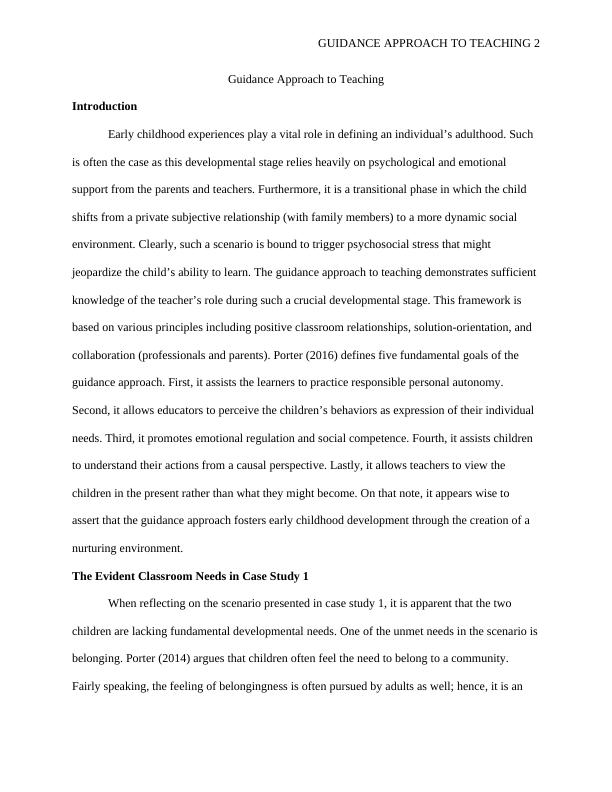Guidance Approach to Teaching: Creating a Nurturing Environment for Early Childhood Development
Added on 2023-05-29
4 Pages778 Words204 Views
End of preview
Want to access all the pages? Upload your documents or become a member.
Early Childhood Development
|8
|2278
|232
Early Childhood Education
|8
|1513
|66
Contemporary Issues in Prior to School and Primary School Teaching
|11
|2946
|498
Key elements of the Framework’s policy on parent and community partnerships
|5
|888
|192
Childhood and Adolescence | Report
|9
|2035
|12
Research Proposal - The use of research methodologies in the field of Early Childhood Studies
|17
|4741
|14

